

2025年日本大阪世博会中国馆
2025年日本大阪世博会于4月13日至10月13日在日本大阪举行,主题为“构想焕发生机的未来社会”。中国馆占地面积约3500平方米,是大阪世博会最大的外国自建馆之一,展馆围绕“共同构建人与自然生命共同体——绿色发展的未来社会”的主题,以“天人合一”“绿水青山”“生生不息”三大篇章为叙事主线,向世界展示5000年中华文明孕育的传统生态智慧,展现新时代绿色发展理念与成就,展望中国同世界各国携手,共同构建人与自然生命共同体的美好愿景。
世博会中国馆核心视觉标识系统及吉祥物主体造型设计由中国美术学院副院长韩绪教授担任总指导,视觉传播学院党委书记兼副院长俞佳迪教授领衔主创团队担任设计。设计团队以“本源设计”为核心理念,立足中华文明精神根系,通过极简凝练的视觉语言直抒东方美学胸臆——以跨越时空的设计对话彰显文化根脉的永恒价值,在返本开新的创作实践中,建构起承载大国气象的视觉叙事体系,生动诠释了新时代中国设计的文化自觉与创新自信。
2025日本大阪世博会中国馆标志
LOGO OF THE CHINA PAVILION
AT EXPO 2025 OSAKA
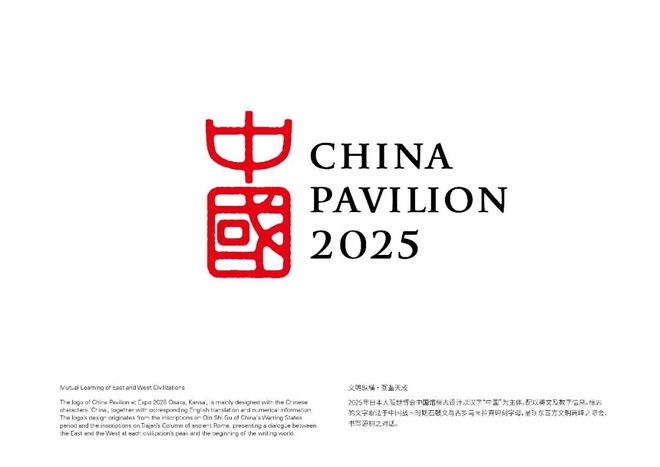
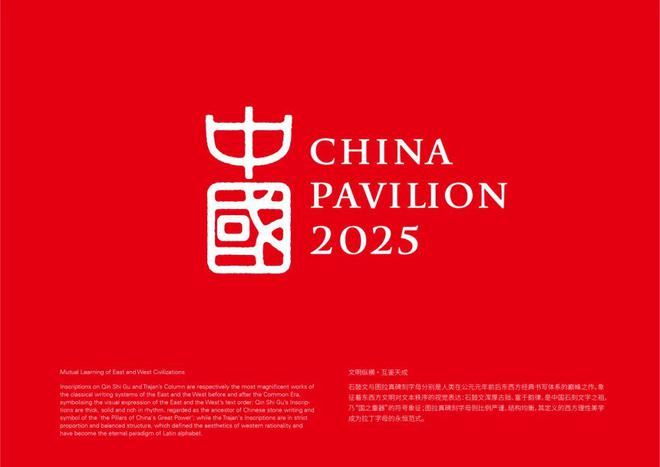
2025年日本大阪世博会中国馆标志设计以汉字“中国”为主体,配以英文及数字信息。标志的文字取法于中国战国时期石鼓文与古罗马图拉真碑刻字母,呈现东西方文明高峰之际会、书写源初之对话。石鼓文与图拉真碑刻字母分别是人类在公元元年前后东西方经典书写体系的巅峰之作,象征着东西方文明对文本秩序的视觉表达:石鼓文浑厚古拙、富于韵律,是中国石刻文字之祖,乃“国之重器”的符号象征;图拉真碑刻字母则比例严谨、结构均衡,其定义的西方理性美学成为拉丁字母的经典范式。
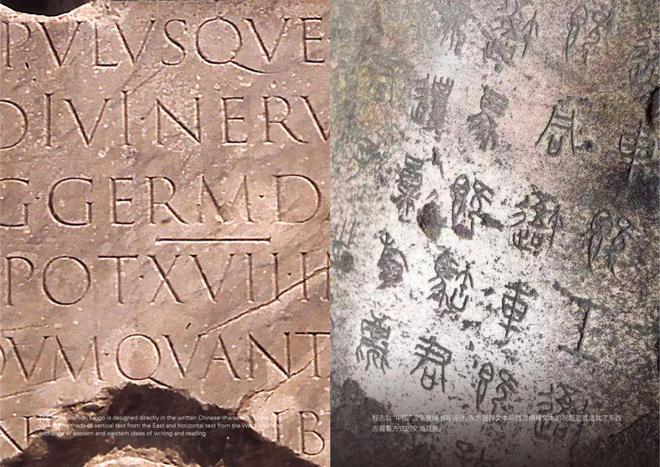
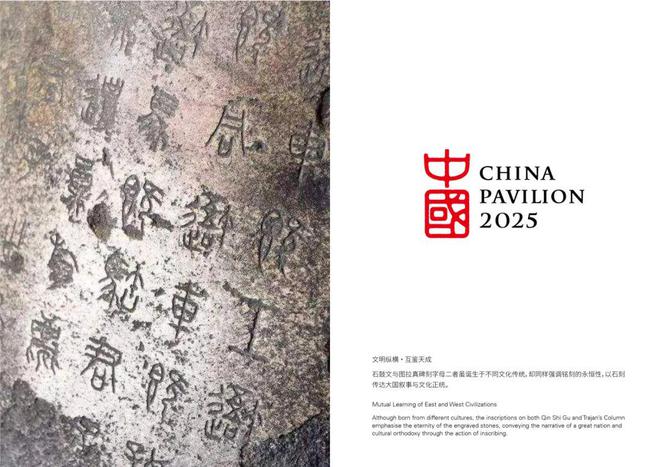
标志以“中国”汉字直接书写设计,东方竖排文本与西方横排文本的视图范式造就了东西方观看方式的交流互鉴。石鼓文与图拉真碑刻字母二者虽诞生于不同文化传统,却同样强调铭刻的永恒性,以石刻传达大国叙事与文化正统。

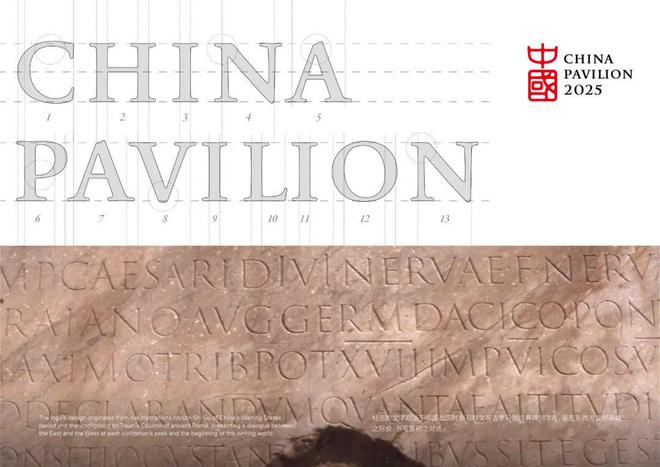
标志整体取法于古而不泥古,完整控制字型之古韵于现代视觉环境中。提炼石鼓文与图拉真碑刻字母造型之精神,以现代设计语言传达东方书写“古拙灵动”与西方书写“严谨端庄”之形式美感:东西方书写体系经典范式的并置互参,终使得东西方文明的历史记忆与文化认同际会相遇。

The logo of China Pavilion at Expo 2025 Osaka, Kansai, is mainly designed with the Chinese characters “China”, together with corresponding English translation and numerical information. The logo’s design originates from the inscriptions on Qin Shi Gu of Chinas Warring States period and the inscriptions on Trajan’s Column of ancient Rome, presenting a dialogue between the East and the West at each civilization’s peak and the beginning of the writing world. Inscriptions on Qin Shi Gu and Trajan’s Column are respectively the most magnificent works of the classical writing systems of the East and the West before and after the Common Era, symbolising the visual expression of the East and the West’s text order: Qin Shi Gu’s Inscriptions are thick, solid and rich in rhythm, regarded as the ancestor of Chinese stone writing and symbol of the “the Pillars of China’s Great Power”; while the Trajan’s Inscriptions are in strict proportion and balanced structure, which defined the aesthetics of western rationality and have become the eternal paradigm of Latin alphabet.
The China Pavilion’s logo is designed directly in the written Chinese characters “China”. The viewing methods of vertical text from the East and horizontal text from the West create an exchange of eastern and western ideas of writing and reading. Although born from different cultures, the inscriptions on both Qin Shi Gu and Trajan’s Column emphasise the eternity of the engraved stones, conveying the narrative of a great nation and cultural orthodoxy through the action of inscribing.
The design of the China Pavilion’s logo references ancient practices, meanwhile fully translates the ancient charm of the characters in a modern visual environment. Refining the spirit of the inscriptions on Qin Shi Gu and Trajan’s Column, the logo uses modern design language to convey the beauty of “naive and dynamic” eastern writing and “precise and dignified” western writing. The logo expresses the conversation of the classic paradigms of eastern and western writing systems, which ultimately make civilisations of both the East and the West meet in historical memory and common understanding of human culture.
2025日本大阪世博会中国馆吉祥物“悠悠”
MASCOT YOYO OF THE CHINA PAVILION
AT EXPO 2025 OSAKA
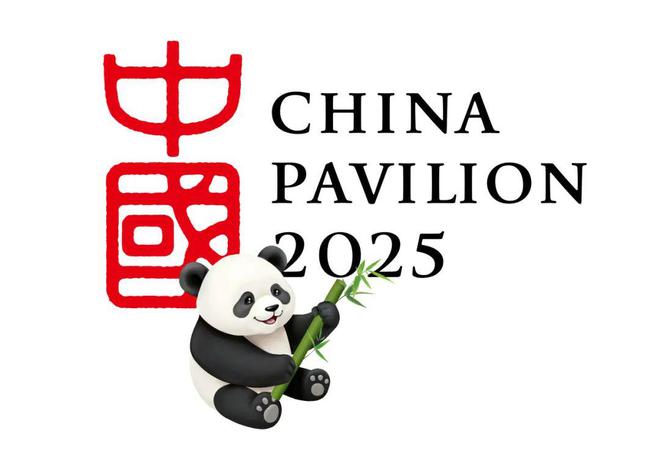
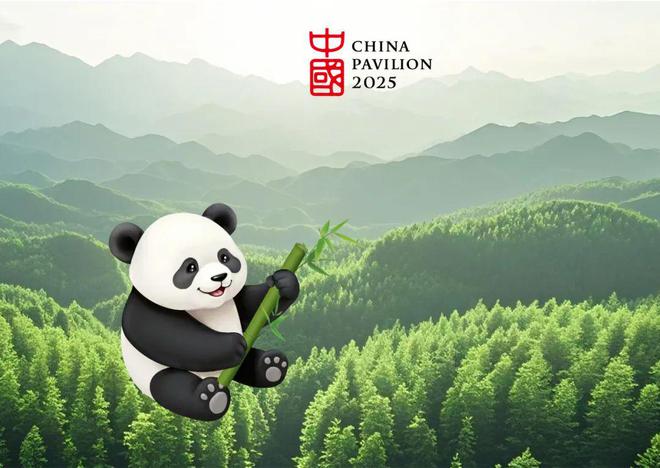
“悠悠”这个名字发音简单、声色圆润,无论任何语言背景的朋友都能轻松地叫出它的名字,世界各国的观众与粉丝都能迅速地与悠悠成为“好朋友”。

“悠悠”从四个方面蕴含着丰富的意义:一是“时光悠悠”,大熊猫是中国独有的珍稀物种,是生物进化的“活化石”。它长达800万年的繁衍生息启迪着我们思考物种与自然的和谐相处,与人类的和谐共生。二是“竹韵悠悠”,竹子既是熊猫的不解之缘,也是中国文化中集众多美好寓意于一身的符号。悠悠胸前怀抱嫩竹,取意“胸有成竹”,我们已经做好准备,张开双臂欢迎全球观众的到来。三是“萌趣悠悠”,悠悠形态憨态可掬,散发着治愈的魅力。我们期待这位萌动人心的“黑白精灵”能够为每位观众送去快乐和阳光。四是“真情悠悠”,大熊猫是中国同世界各国友好交往的温情纽带。几十年来,在各国,特别是在东道国日本,架起了民心相通的桥梁,传递着跨越国界的温暖和感动。
(本段关于吉祥物的设计说明引自公众号“世博会中国馆”)
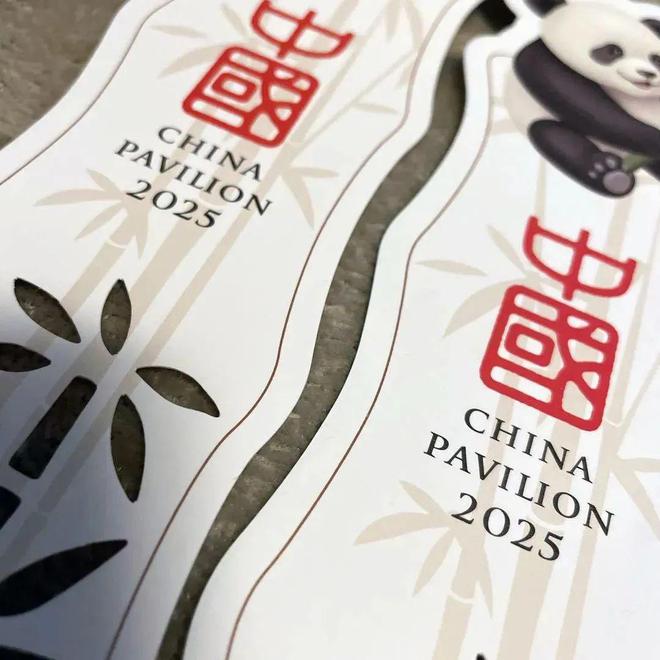
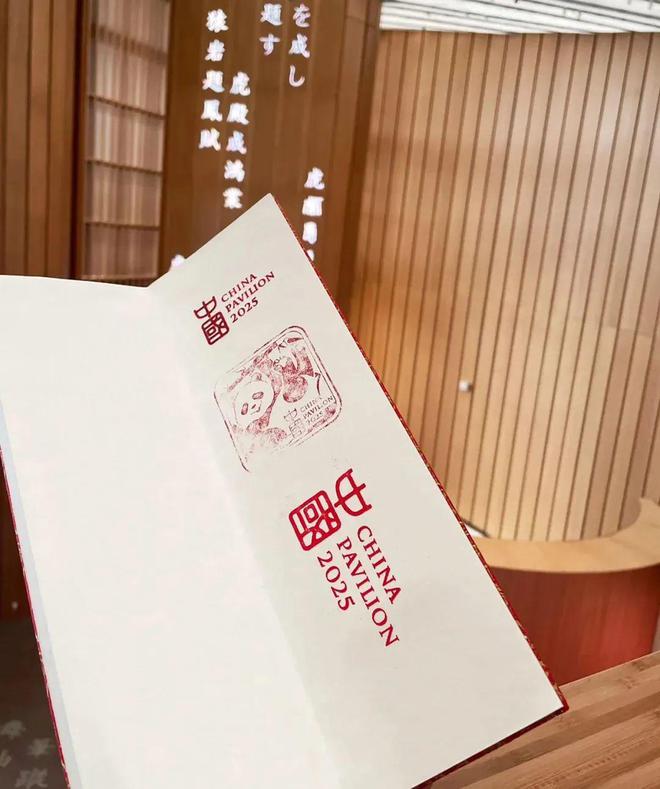
2025大阪世博会衍生品物料
“Yoyo”, the official mascot of China Pavilion, Expo 2025 Osaka, Kansai, whose name is easy to pronounce for people of any language background, would soon become good friends with audiences and fans from all over the world. Meanwhile, the name “Yoyo” is also rich in meaning from four aspects. First, “Shi Guang Yoyo”(Earth memory), the giant panda is one of China’s unique rare species and is a “living fossil” of biological evolution. Its 8-million-year history on Earth inspires us to think about the harmony and coexistence between all living creatures and nature. Secondly, “Zhu Yun Yoyo”(bamboo rhyme), bamboo is not only panda’s survival necessity, but also a symbol that conveys many blissful meanings in Chinese culture. Yoyo is holding a bamboo in front of his chest, which means “Xiong You Cheng Zhu”(ready for anything), telling the world that we are ready to give a warm welcome for audiences from all parts of the world with open arms. Thirdly, “Meng Qu Yoyo”(lovely appearance), the naive appearance of Yoyo exudes a healing charm and we are looking forward to seeing this adorable mascot bring happiness to everyone. Fourthly, “Zhen Qing Yoyo”(true feeling), the panda is a warm bond of friendship between China and the world. Over the past few decades, pandas have built bridges between China and the world, especially in the host country, Japan, and have given warmth of a loving heart across borders.
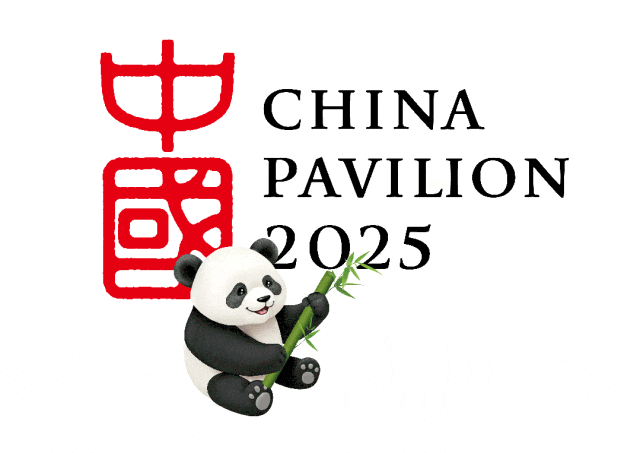
2025大阪世博会中国馆标志及吉祥物设计团队
时间:2025年4月13日—10月13日
地点:大阪世博园国际展区A7
委托方:中国国际贸易促进委员会
总指导
韩绪
设计指导
俞佳迪
设计创意
俞佳迪、卢西、曾平
设计执行
李映昀、胡宗婷、盛沫瑶、闵一凡、黄橙、
郭祺、靳烁、曾靖童、程奕、苏可欣
西文字体
曾平
吉祥物原型
李映昀、靳烁、程奕
吉祥物周边
郭祺、曾靖童、苏可欣
项目统筹
盛沫瑶、闵一凡
来 源|视觉传播学院
编 辑|陈舒婷 戴佳杰 郑佳怡
责 编|邱莉丽 童戈辛 卢 西 周 慧
审 核|方 舟 俞佳迪
中国美术学院官方微信号
投稿邮箱:caanews@caa.edu.cn
“国美学术通讯”官方微信号
投稿邮箱:caarmt@caa.edu.cn
出品:
中国美术学院党委宣传部
PUBLICITY OFFICE OF THE CPC CAA COMMITTEE
CAA融媒体中心
CAA MEDIA CONVERGENCE CENTER

(文化责编:拓荒牛
 )
)









 晋ICP备17002471号-6
晋ICP备17002471号-6